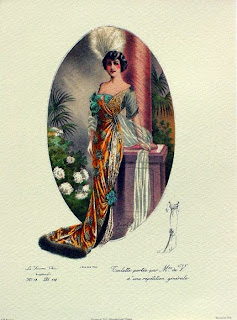This week on Excerpt Thursday, we're welcoming historical romance author Erin O'Quinn. Her latest title, FIRE & SILK, is sent in ancient Ireland and made its debut this month. Join us Sunday, when Erin will be here to talk about the novel and offer a PDF copy to a lucky winner. Erin tells us a bit about the novel:
 If you are familiar with
northern Ireland, you know the name Inishowen, the northernmost promontory,
part of Co. Donegal, that swells into the Sea of Éire. In the fifth century AD,
it was called Inis-Owen, the Isle of Owen, after Owen MacNeill, one of the sons
of the high king Niáll of the Nine Hostages. To the west lay Tyr-Conall, “the
land of Conall,” named after Owen’s brother Conall Gulban and now called
Donegal. And the land south of both was named Tyr-Owen, “the land of Owen.” Of
course, this area is now Co. Tyrone. The following excerpt from Fire
& Silk is a fictionalized account of how those lands got their
name. Yet the derivations of the names are true and accurate.
If you are familiar with
northern Ireland, you know the name Inishowen, the northernmost promontory,
part of Co. Donegal, that swells into the Sea of Éire. In the fifth century AD,
it was called Inis-Owen, the Isle of Owen, after Owen MacNeill, one of the sons
of the high king Niáll of the Nine Hostages. To the west lay Tyr-Conall, “the
land of Conall,” named after Owen’s brother Conall Gulban and now called
Donegal. And the land south of both was named Tyr-Owen, “the land of Owen.” Of
course, this area is now Co. Tyrone. The following excerpt from Fire
& Silk is a fictionalized account of how those lands got their
name. Yet the derivations of the names are true and accurate.
Owen MacNeill is a
character who has appeared in all my romance novels--a cripple, yet a man
bigger than any around him, larger than life, a tragic figure who has just
discovered his royal heritage. Here, the hero of the novel Flann O’Conall is
taking his uncle Owen to see the brother he has never met. The hilltop where
they stop is indeed called the Grianán, and it actually is the site of an
ancient ring fort, as the narrative suggests. On the map, it is the narrow
strip in yellow between the two large lakes.
**An Excerpt from Fire & Silk**
 A curious
procession moved south, beyond Snow Mountain. It bore slightly west, away from
the worst of the foothills in the high pastureland. In front rode a quiet
redheaded man on a black stallion. He turned his head often to gaze at the
woman next to him, one whose long, dark hair lifted like wings around her face.
A curious
procession moved south, beyond Snow Mountain. It bore slightly west, away from
the worst of the foothills in the high pastureland. In front rode a quiet
redheaded man on a black stallion. He turned his head often to gaze at the
woman next to him, one whose long, dark hair lifted like wings around her face.
He
turned in the saddle to glance at his companions. Behind him, there rolled and
rattled a vehicle borrowed from the poetry of the filí, bards of
the kings. The man in the chariot was large and heavy browed, and he shouted
out to a brace of strong horses as he guided the vehicle around a rocky
outcropping or a small gully. Beside him sat a shapely little woman, her deeply
black hair swept up with a large ivory bodkin, her eyes sometimes on the driver
and sometimes gazing ahead.
Behind
the chariot, three very large men sat astride horses, shouting and laughing,
sometimes singing. And in the rear walked six packhorses. This was the caravan
of Owen, King of Inishowen, who traveled to meet his own brother for the first
time.
Above
them, thin clouds, gray as dove feathers, flew south with the prevailing wind.
Flann eyed the clouds from time to time, confident that the fair weather would
continue for another day. It was important that when they reached the hilltop
stone remnants, the Grianán, his Uncle Owen be afforded a clear view.
This
was the fifth day of their trek. This morning they had caught sight of the
Swilly to the west, and Flann reckoned they would see the bird-shrouded island
and the hill fort within the hour....
He
turned Storm around and cantered alongside the chariot. Owen turned his eyes to
the younger man in a silent question.
“There
is a nearby hill,” Flann said. “A place I want ye to see. Can ye ride astride a
horse?”
“I
can, and I will,” Owen answered bluntly.
“Then
let us stop here. I give ye the stallion. And Moc, ye may have the dappled
gelding.”
Flann
signaled to his cousins, and the procession stopped. Murdoch dismounted and
walked to the chariot. He and Flann stood a while talking, and then both men
turned to Owen. Each of them grasped the brawny man by his shoulders and
buttocks, and they lifted him from the chariot and set him high in the
saddle.
Mockingbird
needed no help at all. She mounted Breac easily and waited for Owen. He grasped
the pommel with one large hand and flicked the reins a little, urging the
stallion onward.
Flann
had stepped back, letting Owen and Moc lead the procession. The three MacOwen
boys, now walking, were leading their own horses close to his flank, ready to
catch their father if he should fall from the saddle. He and Mariana ... walked
hand in hand behind all of them....
The
hill was four or five hundred feet above the flat ground, and the incline was
steep enough to force them into a slow, meandering path upward. Flann saw the
first sign of the ancient ruined wall. He saw Owen point and say something to
one of his attendant sons. In spite of the steepness, they all began to move
faster, until finally, they stood on the crest of the sun-drenched hill.
He
joined the others all grouped near and on the tumbled remains of the rock
fortress. Everyone was looking down into the valley on the shining water of the
Swilly and on a small island that seemed to lift and swell as the thousands of
birds took off and landed on its surface.
Owen
sat on the stallion, seeming to be frozen in place, his eyes more alive than
Flann had seen them. “Tell me about this place,” he said without taking his
eyes off the island.
“They
call it the Grianán. I think the place itself used to be called the Kingdom of
Aileach. Ye can see, I think, that it is several hundreds of years old. Here
stood a fortress, Uncle Owen, I am sure of it.”
“I
agree. Who destroyed it—and when? I think none will ever know.” He looked
around the circumference of the stones. “Behold a tumulus—a burial
mound, I think.” He urged Storm twenty feet beyond and sat looking at what to
Flann seemed merely a small grassy hill on a hill. “Perhaps King Aileach himself
lies under this mound.”
“If
ye cast your eyes east, Uncle, ye may catch a glimmer of the River Foyle. About
six or seven miles. There lies the bally of Derry.”
“Indeed?”
Owen asked, a smile toying with his wide, narrow mouth. “Then this place where
we stand lies between the Swilly and the Foyle, and the land south is unclaimed
by any clan.”
“Ye’re
right, Uncle. On the west stands the leg of your brother Conall. And on the
east stands the leg of your brother Leary. The head is Inishowen—your head.”
“And
the land south, nephew, must be my mighty groin, eh? I have often said I would
capture my kingdom like a lover. And there she lies.”
He
pulled the reins sideways, leading Storm to where Moc sat on the gelding, and
he rode close enough to reach out and grasp her hand.
“Boys,
cast your eyes on this place in the sun. It is well-named a grianán,
like a summer house. D’ye think ye can have a new fortress built here?”
Fergus
was clearly excited. “Yes, Father. After our visit with Uncle Conall, Echach
and I can begin to gather men like milk cows and herd them to this high búaile.
We will start to build right away.”
Owen
looked at Flann. “Go raibh maith agat. My deepest thanks. You have
awakened an old desire. This kingdom shall live again. We shall call it the
Land of Owen, or Tyrone, from this day forward.”
 By Lisa Marie Wilkinson
By Lisa Marie Wilkinson The severity of the tailored suit was relieved by feminine touches such as ornate blouses embellished by embroidery, ruffled jabots decorated by stick pins, and collars reaching under the chin that were held in place by silk-wrapped wires to create the impression of an elongated neck.
The severity of the tailored suit was relieved by feminine touches such as ornate blouses embellished by embroidery, ruffled jabots decorated by stick pins, and collars reaching under the chin that were held in place by silk-wrapped wires to create the impression of an elongated neck.






 By
By 














